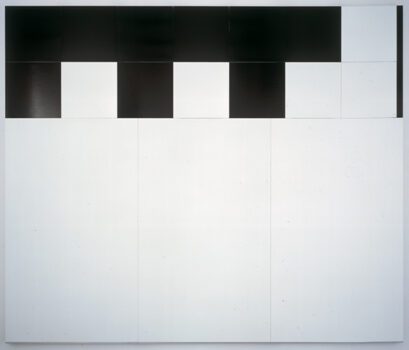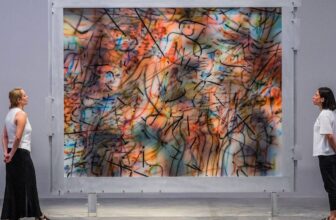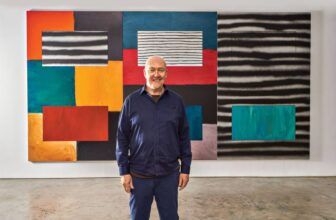What Are Imi Knoebel’s Most Famous Paintings
In the world of contemporary art, few names carry the minimalist gravitas of Imi Knoebel. With a career spanning over five decades, Knoebel has emerged as a master of color, form, and spatial harmony. His work transcends traditional painting, often occupying the space between sculpture and painting, form and void, surface and depth.
Known for his bold abstraction, layered compositions, and distinctive use of industrial materials, Knoebel has secured a place in the pantheon of post-war German artists. His art is not just visual; it’s an experience, a spatial dialogue that engages the eye and the intellect. But what makes Imi Knoebel’s paintings so revered? What are his most famous works? How does he make them, and where can they be found?
Let’s explore the life and legacy of this enigmatic master of minimalist art.
Who is Imi Knoebel?
Born Klaus Wolf Knoebel on December 31, 1940, in Dessau, Germany, Imi Knoebel studied under the legendary Joseph Beuys at the Kunstakademie Düsseldorf. It was here that he met and collaborated with fellow student Imi Giese, with whom he would later share his pseudonym, “Imi”, a playful term derived from the word “Ich mit Ihm” (“me with him”). This duality would serve as a foundational concept in Knoebel’s work: the relationship between self and other, subject and object, art and viewer.
Knoebel began his artistic journey influenced by the Bauhaus and Russian Constructivism, later incorporating elements of American Minimalism into his visual language. His early works were experimental, using projected light and transparent materials. Over time, his practice evolved into a more structured engagement with form, color, and space.
What Is Imi Knoebel Known For?
Imi Knoebel is primarily known for his geometric abstraction and his ability to explore the relationship between form, space, and color. Unlike many contemporary artists who use art as a vehicle for narrative or social commentary, Knoebel’s work remains defiantly non-representational. His pieces are visual investigations, scientific almost, in their precision and structure.
His major contributions include:
Interplay of colors: Knoebel’s later work shows a vibrant command of color relationships, often using bold hues to explore visual harmony and tension.
Shaped canvases and layered panels: He moves beyond the rectangle, constructing paintings with cut-out forms layered like sculptural reliefs.
Use of industrial materials: Knoebel often paints on aluminum or wood panels, eschewing traditional canvas.
Minimalist purity: His works distill art down to its most basic elements, line, shape, color, and structure.
Knoebel’s work has been exhibited in museums, galleries, and biennales across the globe, yet his pieces maintain a sense of intimate, almost meditative, silence. They don’t shout for attention, they draw it through quiet confidence.
What Art Style Is Imi Knoebel Associated With?
Imi Knoebel’s art falls under several overlapping categories, though none can fully define him:
Minimalism: Knoebel aligns with the minimalist tradition, focusing on elemental forms and rejecting figuration.
Abstract Art: His paintings are wholly non-representational, aligning with abstract art’s principles.
Geometric Abstraction: Much of Knoebel’s work involves the precise use of geometric forms.
Color Field Painting: Later in his career, he embraced vivid colors and large swathes of painted space.
Postmodern Constructivism: His early influences from Malevich and Lissitzky shine through in his architectural compositions.
By synthesizing these styles, Knoebel creates a unique language of abstraction that is at once historical and contemporary.
What Are Imi Knoebel’s Most Famous Paintings?
Though Knoebel has created hundreds of artworks, several stand out as cornerstones of his oeuvre:
1. “24 Farben – für Blinky” (1977)
A tribute to his friend and fellow minimalist Blinky Palermo, this series of 24 color panels represents a turning point in Knoebel’s career. It marks his transition from black-and-white studies to vivid color. Each panel is unique yet harmoniously unified with the others, a celebration of friendship through color.
2. “Grace Kelly” Series (2002)
This collection features shaped aluminum panels painted in bold primary colors. The title, referencing the Hollywood actress and princess, is ironic, as the work itself is devoid of any figurative reference. It’s pure geometry.
3. “Kinderstern” (The Children’s Star)
This red star-shaped artwork is Knoebel’s most famous philanthropic work. Sold in editions, all proceeds support children’s charities. It’s one of the few instances where Knoebel blends aesthetic simplicity with social function.
4. “Anima Mundi” (2011)
A monumental installation comprising 40 colorful panels, this piece was created for the Vatican Pavilion at the Venice Biennale. “Anima Mundi” reflects the artist’s lifelong engagement with spirituality through abstraction.
5. “Ich Nicht IX” (2006)
Part of a series exploring the notion of self and negation, this piece consists of colored panels arranged like jigsaw puzzles, inviting the viewer to interpret their order and relationship.
How Does Imi Knoebel Make His Paintings?
Imi Knoebel’s process is meticulous, methodical, and rooted in precision craftsmanship. His creative approach includes the following steps:
Sketching and Modeling: Knoebel begins with detailed sketches and often constructs scale models of the works to plan their spatial composition.
Material Selection: He chooses wood, MDF (medium-density fiberboard), or aluminum panels as his painting surfaces. These materials allow for sharp edges and durability.
Cutting and Shaping: Using industrial tools, Knoebel cuts these materials into precise geometric shapes, rectangles, curves, obliques, depending on the design.
Priming and Painting: Each piece is hand-painted, sometimes in multiple layers, using vibrant, often solid colors. He avoids painterly brushstrokes, favoring smooth, uniform surfaces.
Assembly: The final step involves layering and assembling the painted panels into wall-hung constructions. These may be bolted, glued, or suspended.
His studio practice often resembles that of an architect or engineer more than a traditional painter. The result: works that are perfectly calibrated visual machines.
What Materials Does Imi Knoebel Use?
Imi Knoebel is celebrated for his unconventional use of industrial and architectural materials. These include:
Aluminum: His preferred material in recent decades for its lightness, durability, and clean finish.
Wood/MDF panels: Especially in earlier works, wood allowed him to construct larger and heavier compositions.
Acrylic paint: Known for its vibrant color and fast drying time.
Hardboard and plexiglass: Occasionally used in his early light projection pieces.
Digital Printing (Rarely): While most works are hand-painted, some editions feature printed elements.
The choice of material is never arbitrary; it aligns with Knoebel’s core belief that the medium is part of the message, a material’s inherent qualities must support the concept of the artwork.
How Many Paintings Does Imi Knoebel Have?
As of 2025, Imi Knoebel has created well over 1,000 individual pieces, though it’s difficult to pin down an exact number due to:
Numerous multi-panel works
Ongoing series and editions
Site-specific installations
Limited editions like Kinderstern
While many of his works are in museum collections or private hands, Knoebel continues to produce new art at his Düsseldorf studio.
How Much Do Imi Knoebel’s Paintings Cost?
The value of Knoebel’s work has skyrocketed in recent years, as collectors and museums increasingly recognize his significance. Here’s a breakdown of market value:
Original Paintings:
Smaller works: $50,000 to $200,000
Medium-sized panel works: $250,000 to $500,000
Large-scale, iconic compositions: $1 million or more
Editions and Multiples:
Limited editions (like Kinderstern): $1,000 to $5,000
Serigraphs and printed works: $10,000 to $50,000
Auction Records:
Knoebel’s highest auction price to date was $1.6 million USD for a major multi-panel piece sold at Christie’s.
The price depends heavily on provenance, condition, size, and artistic significance. Works tied to his famous series like “24 Farben” or “Grace Kelly” command premium prices.
Where Are Imi Knoebel’s Paintings Located?
Knoebel’s work is held in major public and private collections across the globe. Some prominent locations include:
Museums:
Museum of Modern Art (MoMA), New York
Dia Art Foundation, Beacon, NY
Stedelijk Museum, Amsterdam
Centre Pompidou, Paris
Kunstmuseum Bonn
Pinakothek der Moderne, Munich
Museum Ludwig, Cologne
Hirshhorn Museum and Sculpture Garden, Washington D.C.
Galleries Representing Knoebel:
Galerie Thaddaeus Ropac (Paris/Salzburg)
Galerie Christian Lethert (Cologne)
White Cube (London)
Galerie nächst St. Stephan (Vienna)
Public Installations:
Large-scale wall works and commissions can be found in German government buildings, corporate headquarters, and university campuses.
Imi Knoebel’s art resists easy interpretation because it doesn’t want to be “read”, it wants to be experienced. It’s visual music, composed of rhythm, contrast, and silence. Knoebel invites the viewer to step into a space of pure form and feeling, where color sings and shapes dance.
His commitment to abstraction has made him one of the most respected contemporary artists of our time. Whether you’re encountering a single aluminum panel or a towering multi-part installation, Knoebel’s work speaks to the essence of visual perception and the beauty of simplicity.
As the art market continues to elevate his status and museums cement his legacy, Imi Knoebel remains a quiet force in modern art, a master of precision, color, and form, building an enduring legacy one panel at a time. image/ wikiart




